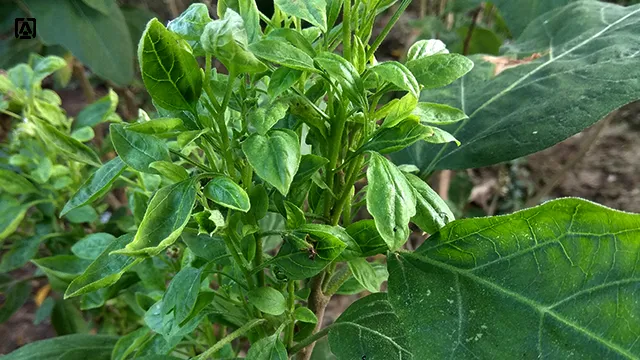Little leaf of brinjal
Pathogen name: Phytoplasma
Host name: Brinjal/Eggplant (Solanum melongena)
Transmission: Disease is transmitted by leafhopper vector Hishimonus phycitis
Host name: Brinjal/Eggplant (Solanum melongena)
Transmission: Disease is transmitted by leafhopper vector Hishimonus phycitis
Discovery and distribution
Little leaf of brinjeal was first reported from Coimbatore by Thomas and Krishnaswami in 1939. The disease is now widespread throughout India.
Symptoms
 |
| Plant of brinjal showing normal leaves (out of focus) and little leaves (in the center). Photograph provided by Mr. Pradeep Singh |
Stunting of the plant, reduction in leaf size, and rosette appearance are the most prominent symptoms of little leaf disease of brinjal or eggplant. This is because infection induces the dormant axillary buds and reduces the growth of internodes. In severe infection, the floral part becomes leafy (Phyllody).
Disease cycle and transmission
Little leaf is caused by phytoplasma (earlier known as Mycoplasma Like Organisms, MLO). The causal organism of the little leaf also infects the other solanaceous plants like chili, tomato, and datura. When brinjal is grown nearby, the phytoplasma is transmitted to the brinjal through the vector Hishimonus phycitis.
Control measures
- Yellow sticky traps should be installed to divert the insect vectors.
- The population of vectors can be controlled by using Profenofos or Cypermethrin.
- Spraying with antibiotics, tetracyclin hydrochloride, and streptomycin sulfate suppress the infection.
- Affected plants should be removed and burned.
Content first created on 30-09-2020
last updated on 18-10-2024
last updated on 18-10-2024





0 Comments
Leave your comments here.